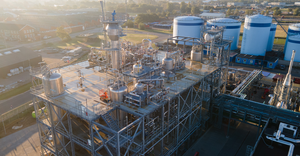Turning Waste into Energy in Connecticut
May 27, 2020

The State of Connecticut has a strategy to reduce the amount of garbage it burns by converting food and other organic waste into energy and compost. With the cost of waste rising there is growing interest in anaerobic digestion, although to date Connecticut hasn’t attracted much investment in this area. Today, there is only one anaerobic digester in the state. However, this could change as private equity investors and other states ramp up their investment in anaerobic digestion.
Anaerobic digestion breaks down waste to create natural fertilizer and a mixture of methane and carbon dioxide called biogas, which can be used to produce electricity that can either be used or sold. “Anaerobic digestion has a bright future, but it’s more a question of timing,” said Brian Paganini, vice president and managing director, Quantum Biopower, Connecticut’s only anaerobic digester.
“More [low-carbon] programs will be popping up in the future,” Paganini said. Quantum is looking into other ways to use the biogas. Biomethane, a purified form of raw biogas, may be coming to Connecticut in the future to be injected into the natural gas distribution system.
In 2014, Connecticut was the first state to mandate the removal and separate recycling of organic waste from large commercial producers’ trash streams. What could be next? The residential side of food waste.
You May Also Like


